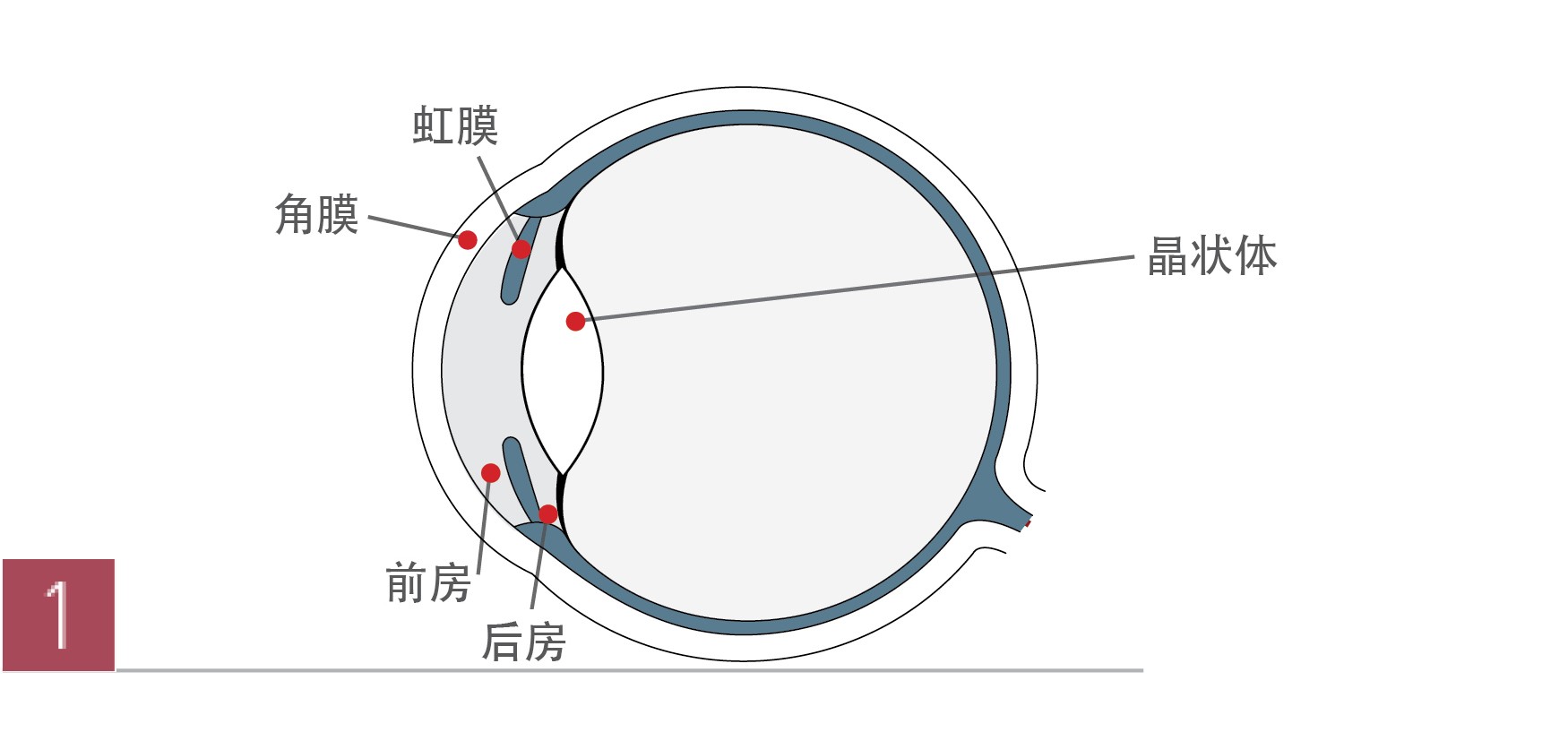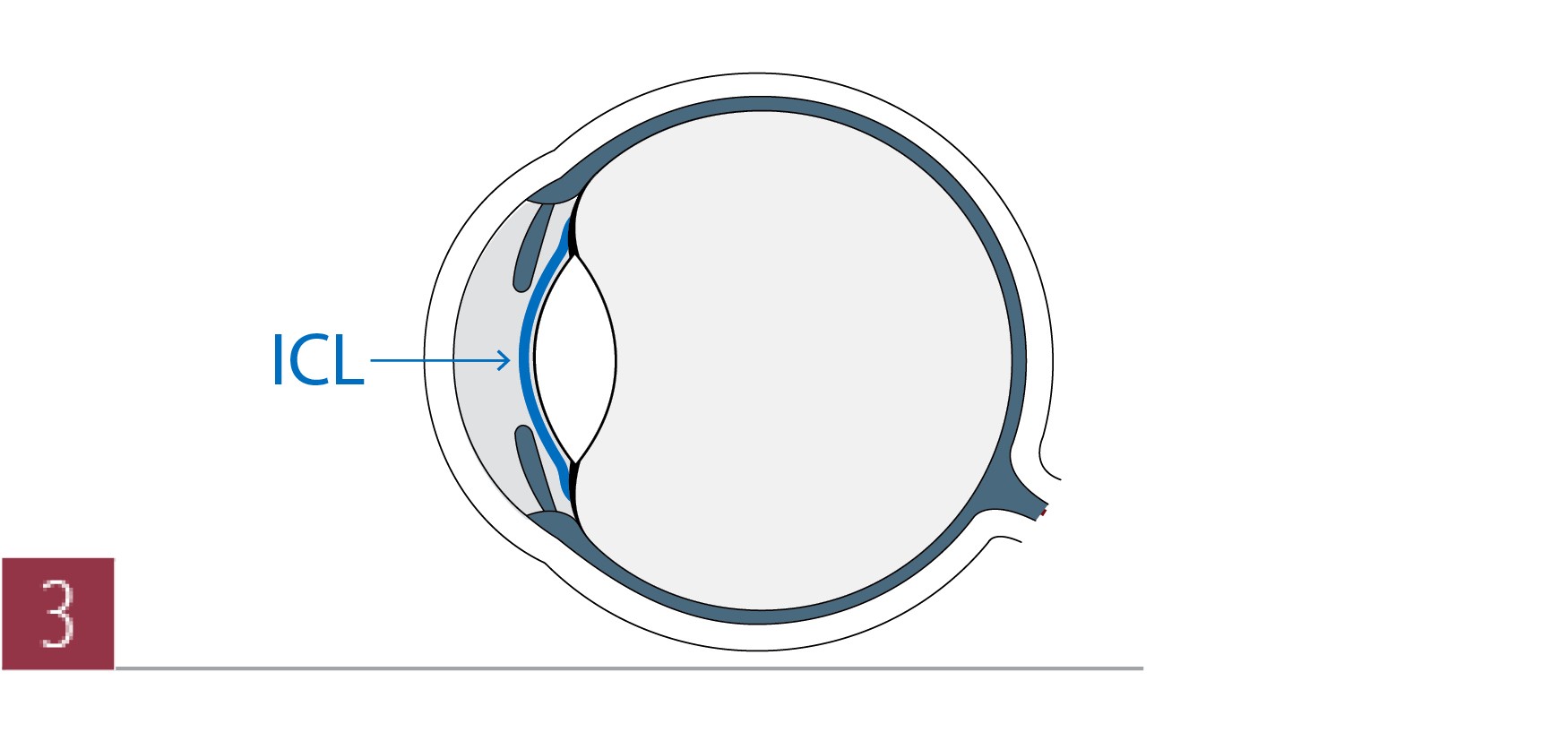People with extreme nearsightedness or farsightedness or a thin cornea are typically not suitable for a laser eye treatment. Surrender to fate and accept glasses? Not with EuroEyes!
With the ICL, a phakic intraocular lens, EuroEyes can offer an excellent alternative treatment for nearsighted patients with a diopter higher than -8, and for farsighted patients with a diopter higher than +3 – even if the refractive error is combined with astigmatism. Contrary to a contact lens, the ICL will remain permanently in the eye, but can be replaced at any time. It is positioned between iris and the natural lens. In cooperation with your natural lens, the ICL thereby ensures that the light is correctly focused on the retina, making it possible for the patient to see clearly once again. This procedure has been carried out for more than 25 years and is considered a safe method for the treatment of myopia, farsightedness and astigmatism.
And you can be sure that EuroEyes has implanted the most ICL contact lenses in Europe for the fourth time in a row.

This outpatient procedure typically lasts 10 minutes per eye. Eye drop anesthetics create a pain free procedure. The eye is opened with a key-hole incision in the corneal periphery that heals without a suture.

With ICL each patient receives a tailor-made artificial biopolymer lens implant that has lifetime durability. The ICL lens is flexible and foldable like a contact lens, and is inserted into the eye in a matter of seconds with an injector through the small corneal incision.

Unlike a contact lens, ICL is positioned in the posterior chamber of the eye between the iris and natural lens. It remains there permanently and is neither visible nor perceptible. The custom made ICL collamer® lens together with the natural lens redirect the light to focus on the retina with optical precision. After the treatment the patient can see clearly without glasses and contact lenses.

Professor of Ophthalmology at Heidelberg University in Germany
More>>
Eye surgeon and specialist in ophthalmology at the EuroEyes clinic group
More>>
Founder of the EuroEyes Clinical Group
More>>
Cataract and refractive surgeon
Author of two patents

Professional experience in ophthalmology/positions
More>>
同仁医院眼科博士
北京德视佳医疗副总监、主诊医生

中山大学中山眼科博士(眼科学)
德视佳眼科集团主诊医生

毕业于卢甘斯克州立医科大学
乌克兰眼科协会会员
曾参与瑞士SOE AAO会议
视网膜诊断,屈光手术方案制定(包含:近视,散光,白内障,老花),Yag手术等...

德视佳眼科全飞秒手术医生
上海手术机构屈光医生

蔡司全飞秒手术认证医师
北京华贸中心德视佳眼科主诊医师

EuroEyes WeChat